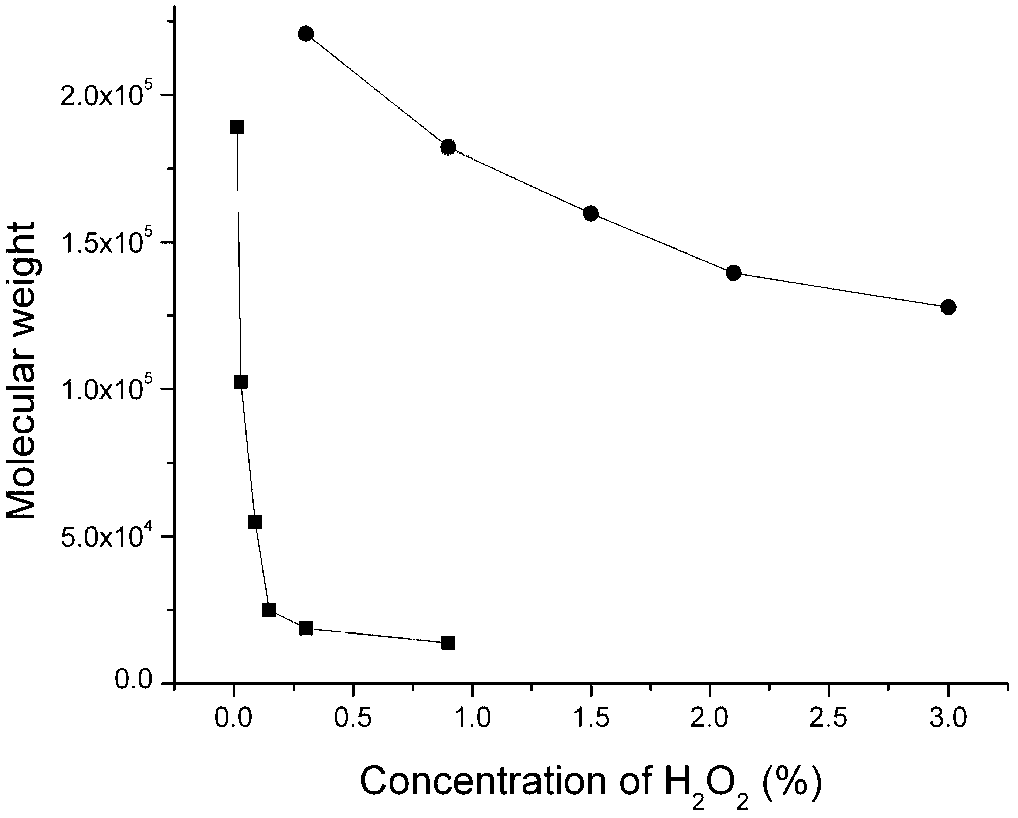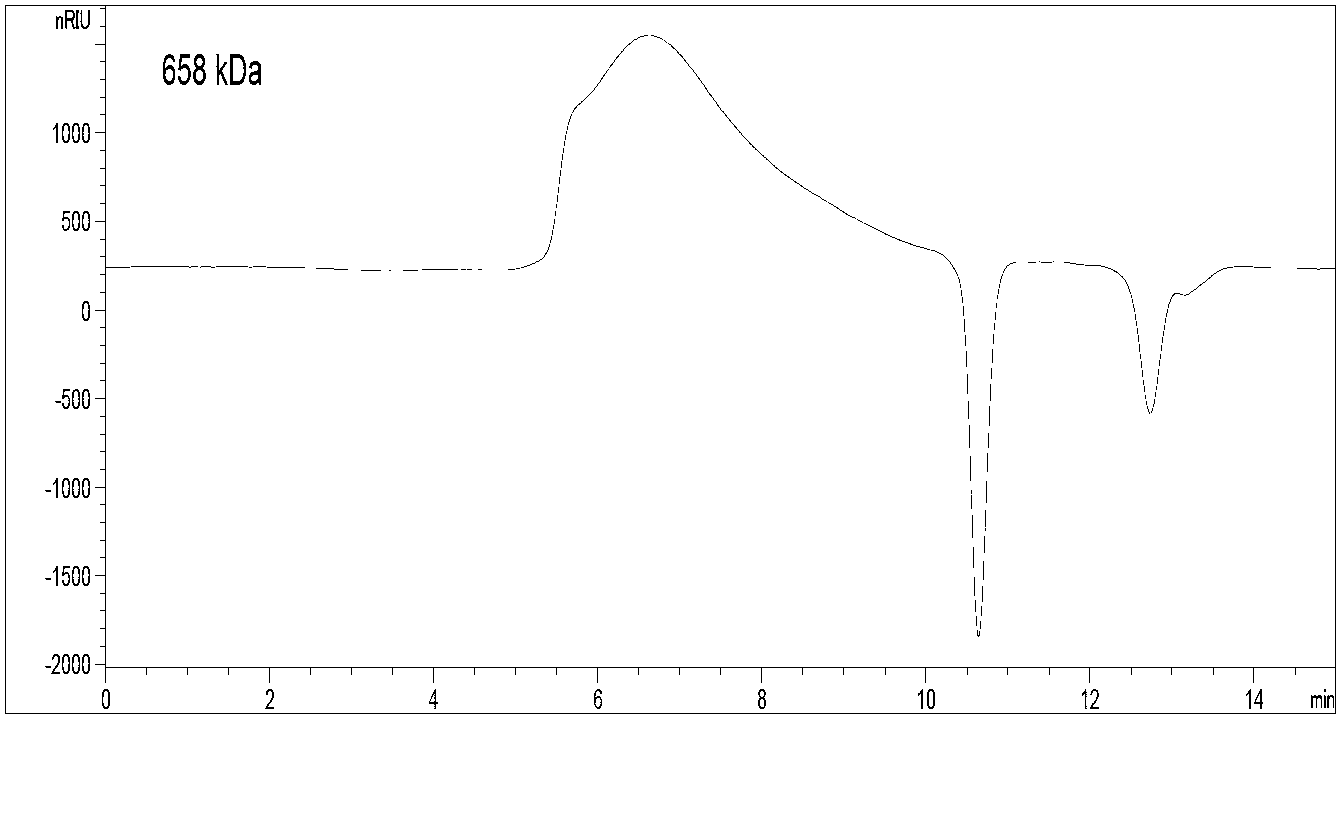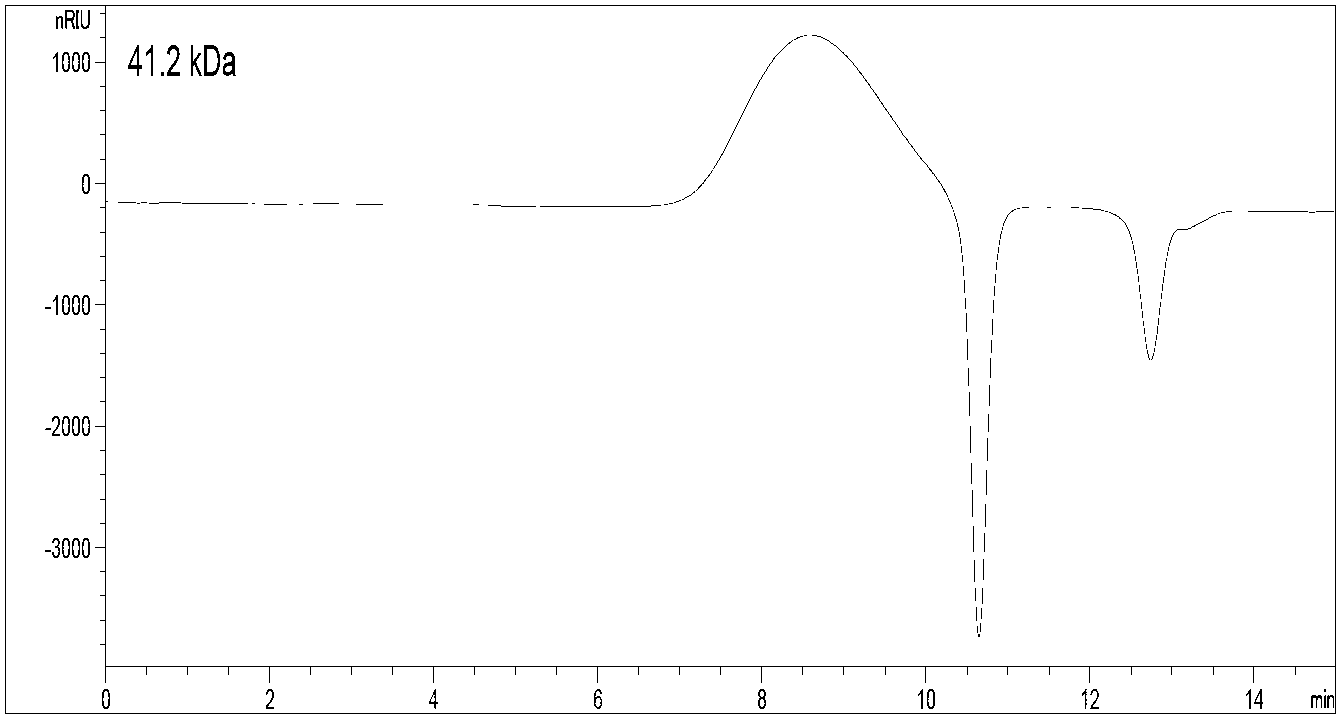Method for degrading chitosan
A technology of chitosan and chitosan solution, which is applied in chemical instruments and methods, amino sugar, sugar derivatives, etc., can solve the problems of slow degradation rate and chitosan structure damage, and achieve high reaction rate and fast reaction , Improve the effect of reaction conditions
- Summary
- Abstract
- Description
- Claims
- Application Information
AI Technical Summary
Problems solved by technology
Method used
Image
Examples
Embodiment 1
[0019] High molecular weight chitosan (658kDa) 2g is dissolved in 100ml 2% (mass fraction) acetic acid to obtain chitosan solution, in chitosan solution, add the hydrogen peroxide of a certain amount (accounting for the volume fraction of chitosan solution by hydrogen peroxide), The final concentration of hydrogen peroxide is as figure 1 As shown, two modes of traditional heating and microwave heating were used to degrade chitosan. The reaction temperature was controlled at 70°C, and the degradation was performed for 20 minutes. In the microwave mode, the microwave power was 600W. The molecular weight was determined by gel size exclusion chromatography, such as figure 1 As shown, under the same temperature and degradation time conditions, the concentration of hydrogen peroxide needed to degrade chitosan with similar molecular weight in the microwave-assisted mode is significantly lower than that in the traditional heating mode.
Embodiment 2
[0021] High molecular weight chitosan (658kDa) 2g is dissolved in 100ml 1% (mass fraction) hydrochloric acid to obtain chitosan solution, in chitosan solution, add 1ml 30% hydrogen peroxide, at microwave power 600W, control reaction temperature is 70 ℃, Degrade for 10 minutes, neutralize the reacted solution with lye to neutrality, precipitate with alcohol, collect the precipitate after centrifugation, and freeze-dry to obtain chitosan with low molecular weight. The resulting product was determined to have a molecular weight of 41.2kDa ( Figure 2B shown), the infrared spectrum of the degradation product was compared with that of the initial chitosan raw material ( image 3 Shown), found the characteristic absorption peak 1643cm of raw material chitosan -1 (amide I), 1558cm -1 (Amide II), 1322cm -1 (amide III), 1158895cm -1 (The characteristic absorption peak of the basic skeleton of the sugar ring) still exists after degradation, indicating that the basic structure of chi...
Embodiment 3
[0023] High molecular weight chitosan (658kDa) 2g is dissolved in 100ml 1% (mass fraction) acetic acid to obtain chitosan solution, in chitosan solution, add 1ml 30% hydrogen peroxide, at microwave power 600W, control reaction temperature is 70 ℃, After degrading for 30 minutes, the reacted solution was neutralized with lye to neutrality, alcohol precipitation was performed, and the precipitate was collected after centrifugation, and then freeze-dried to obtain chitosan with low molecular weight. The resulting product was determined to have a molecular weight of 9.0kDa ( Figure 2C shown), the infrared spectrum of the degradation product was compared with that of the initial chitosan raw material ( image 3 Shown), found the characteristic absorption peak 1643cm of raw material chitosan -1 (amide I), 1558cm -1 (Amide II), 1322cm -1 (amide III), 1158895cm -1 (The characteristic absorption peak of the basic skeleton of the sugar ring) still exists after degradation, indicati...
PUM
 Login to View More
Login to View More Abstract
Description
Claims
Application Information
 Login to View More
Login to View More - R&D
- Intellectual Property
- Life Sciences
- Materials
- Tech Scout
- Unparalleled Data Quality
- Higher Quality Content
- 60% Fewer Hallucinations
Browse by: Latest US Patents, China's latest patents, Technical Efficacy Thesaurus, Application Domain, Technology Topic, Popular Technical Reports.
© 2025 PatSnap. All rights reserved.Legal|Privacy policy|Modern Slavery Act Transparency Statement|Sitemap|About US| Contact US: help@patsnap.com



